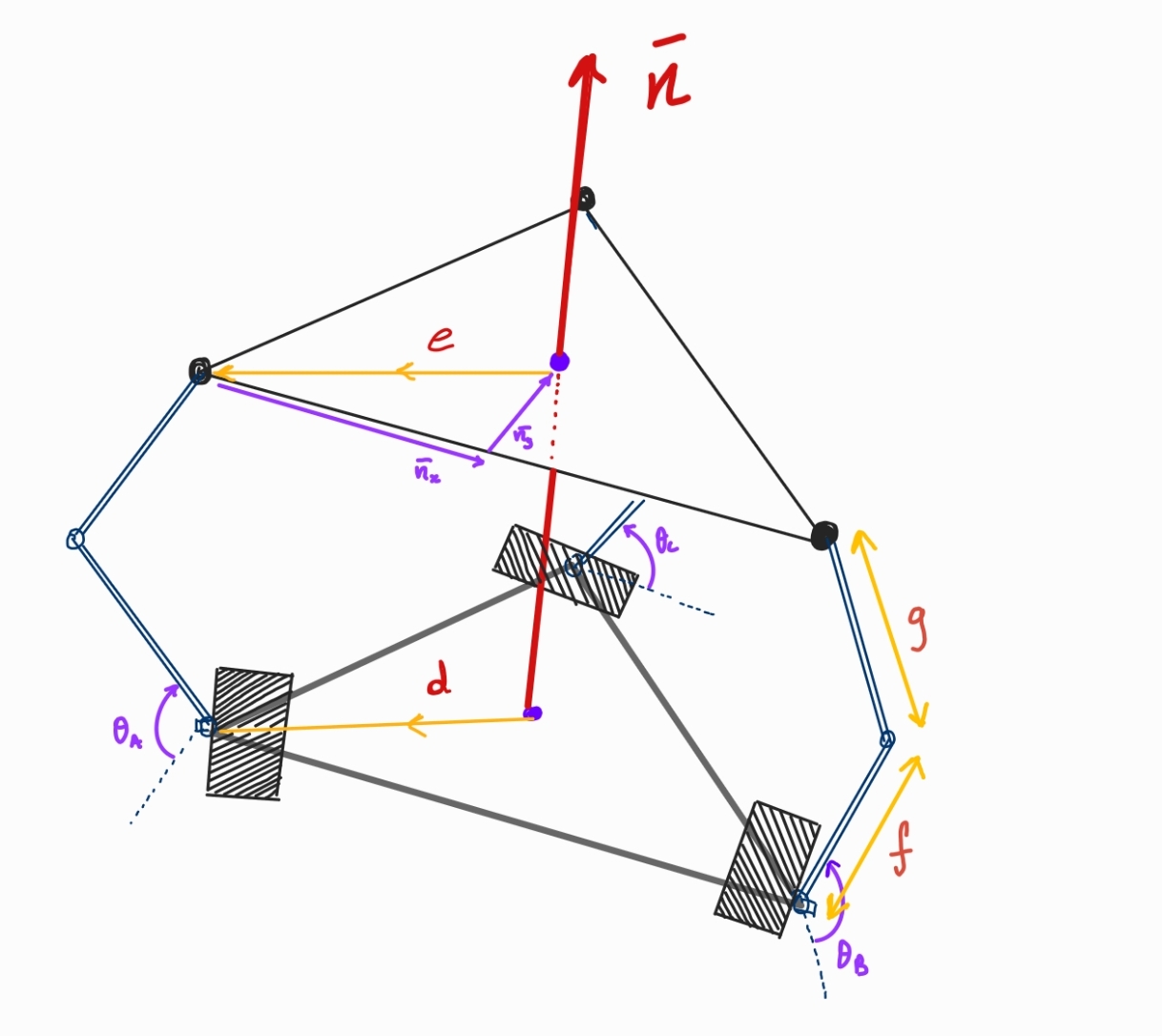The Ball-Balancing Robot dynamically stabilizes a steel ball on a tilting touchscreen platform, preventing it from rolling off the edges. This project required integrating mechanical, electrical, and software components into a cohesive system, highlighting practical applications of control systems and robotics.
Key Features
1. 3-RPS Parallel Manipulator Framework
The platform uses three stepper motors to control three mechanically operated legs, achieving precise movements with three degrees of freedom.

2. PID Control Algorithm
A closed feedback loop processes real-time data from the resistive touchscreen to adjust platform tilt, maintaining balance.
- Proportional gain: ( K_p = 4E-4 )
- Integral gain: ( K_i = 2E-6 )
- Derivative gain: ( K_d = 7E-3 )

3. Inverse Kinematics
Stepper motors adjust based on derived angles to position the ball precisely, calculated through mathematical models and implemented in Arduino.
4. Microstepping
Fine control with 1/32 microstepping for smooth and precise motor movements, achieving 6400 steps per revolution.
5. Custom 3D Design
All components, including the platform and mechanical legs, were designed and 3D-printed using PLA material.


Challenges and Solutions
- Current Limitations: Optimized motor performance by calibrating driver current to 1.25A.
- 3D Printing Tolerances: Adjusted designs for better assembly fit, ensuring stability and precision.
- Hardware Upgrades: Transitioned from Arduino UNO to Arduino Mega for expanded I/O capabilities and resolved serial communication issues.
Learning Outcomes
This project provided hands-on experience with mechatronics systems, emphasizing:
- Designing and implementing control algorithms.
- Integrating hardware components.
- Systematic debugging and troubleshooting in a complex interdisciplinary setting.
Future Improvements
- Enhanced Responsiveness: Refine PID tuning to reduce oscillations and improve ball stability during disturbances.
- Dynamic Movement Patterns: Add features to move the ball in predefined paths using updated control logic.
- User Interaction: Integrate an LED screen and control buttons for better usability and testing.
Explore the intricacies of control systems and robotics through this project that blends innovation and practical application.
